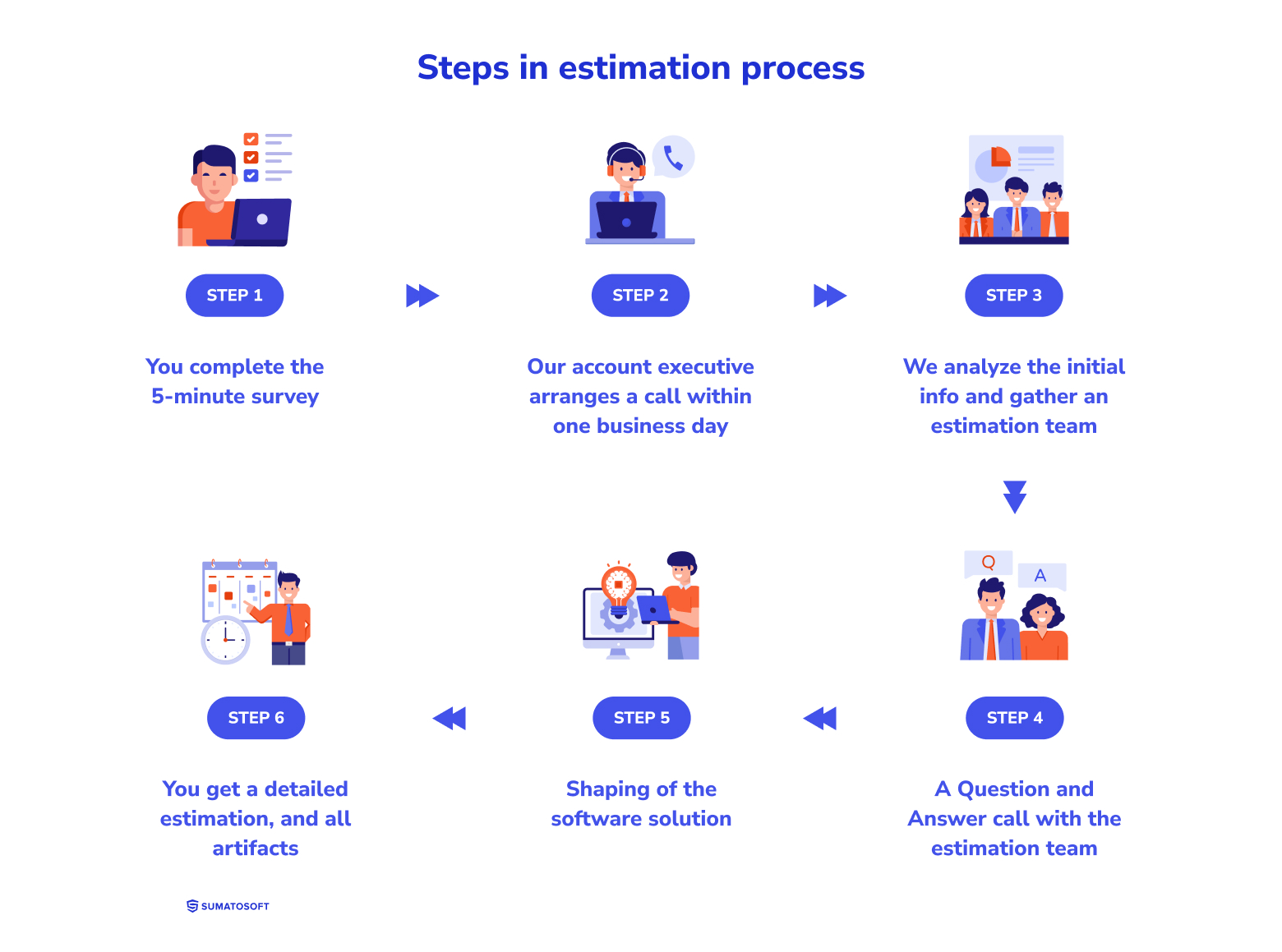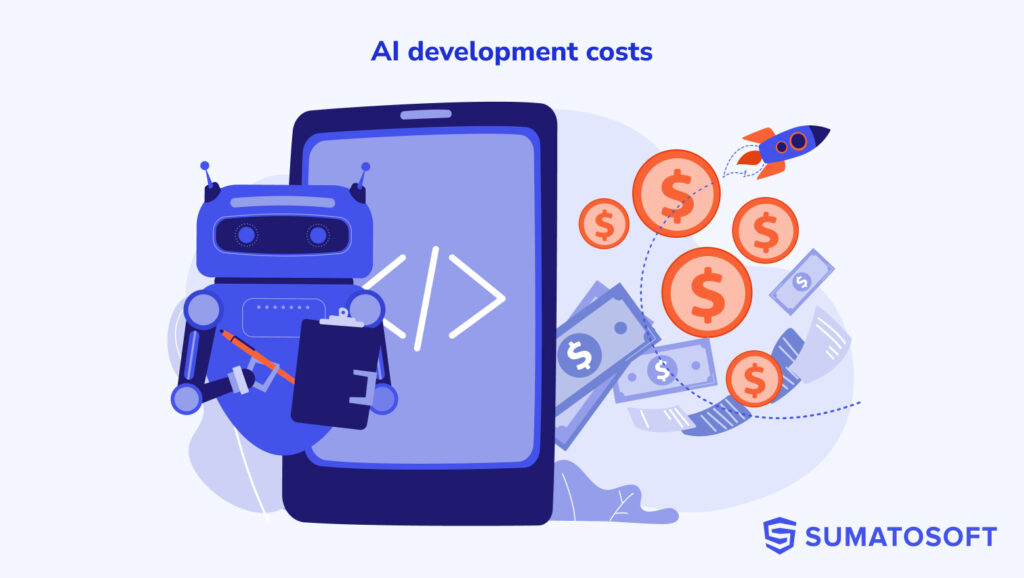How much will your software cost?
Fill in the form below with details about your project and get a free cost and timeline estimation! Our business analysts, developers, and designers accurately analyze the provided information and make a detailed estimation of projects costs along with the production vision.
Free analysis and estimation for your project
What do you want to get a quote for?
Pricing models we offer
Time & Material
The Time & Material engagement model involves monthly billing based on the actual development efforts from the previous month (person-hours worked). The contract typically includes:
- unfixed budget with only the hourly rate specified;
- unfixed scope of work.
Fixed Budget
The Fixed Budget model is one of the most popular pricing options. It builds upon the Time & Material model, the only difference being a commitment to deliver a complete and logically structured solution within an agreed budget. The contract typically includes:
- fixed budget with the hourly rate mentioned;
- unfixed scope, with a commitment to deliver the complete solution within the budget.
Fixed Price
The Fixed Price model operates on a predefined sum specified in the contract, paid in parts as agreed. This model offers high predictability as the developers commit to delivering a specific scope within a specific budget. However, it is also the least flexible, as the scope cannot be altered once development begins. The contract typically includes:
- fixed budget without hourly rates mentioned;
- fixed scope, described in detail to avoid misunderstandings during acceptance.
Dedicated Team
The Dedicated Team model provides specialists who fully dedicate their efforts to a project. This model allows the Client to directly manage the team, assign tasks, monitor progress, and receive reports. Billing is based on the specialists’ monthly salaries. The contract typically includes:
- fixed budget based on the specialists’ monthly salaries and the number of specialists involved;
- unfixed scope, managed entirely by the Client.
Key cost components of software development
Budget share: 15%
Weight in achieving project goals: 40%
This cost covers different activities of the development team, including:
- stakeholder interviews and workshops to elicit and document requirements;
- identification of business goals, technical needs, and potential risks;
- creating project roadmaps and timelines and calculating exact development budgets;
- setting up communication channels and project management tools.
Budget share: 10%
Weight in achieving project goals: 25%
We work on creating a technical structure and user-friendly designs:
- our experts design the system architecture and choose the appropriate technologies;
- we craft mockups, wireframes, and interactive prototypes;
- we analyze competitors and user behavior to ensure the product stands out;
- we refine designs based on the Client’s feedback every step of the way.
Budget share: 55%
Weight in achieving project goals: 15%
Coding represents the most significant share of the total cost, as it requires the majority of effort and time. Activities in this phase include:
- transforming requirements and designs into functional software;
- the Tech Lead ensures code quality and monitor the team;
- The project manager tracks progress, handles risks, and keeps the Client informed on the project’s health;
- regular biweekly demos.
Budget share: 15%
Weight in achieving project goals: 15%
The level of quality assurance is agreed upon at the beginning of the project and may include various testing methods and techniques to ensure product quality. Paid activities in this component include:
- verifying functionality, performance, usability, and identifying edge cases;
- running regression, performance, and security tests with scripts for consistency and efficiency;
- conducting accessibility, compatibility, load, and security tests;
- ensuring features align with requirements and acceptance criteria.
Budget share: ~15% of the project development cost yearly
Weight in achieving project goals: 5%
Support and maintenance costs go beyond the standard software development lifecycle, and these efforts focus on ensuring the product’s long-term stability and growth. Activities here include:
- monitoring product performance and addressing bugs.
- updating libraries and technologies.
- new feature development.
Frequently asked questions
How much does it cost to develop a software?
The cost of software development varies based on project complexity, required features, and the development team’s location. Project costs can range from $10,000 for simple applications to $500,000+ for enterprise-grade solutions.
How much does it cost to pay a software developer?
Developer compensation varies by region and expertise. In North America, hourly rates range from $71 to $95, while in Eastern Europe, rates are between $27 and $51 per hour. These variations depend on factors like experience, specialization, and local market rates.
How do you calculate custom software development costs?
We calculate costs through a structured process: the Client completes a survey, followed by a call with our team and a free discovery session. After discussing project details with the discovery team, we shape the solution and provide a detailed estimation with all necessary artifacts, ensuring transparency and accuracy.
What factors influence software development cost?
Key factors include the project’s complexity, the number and intricacy of features, the development team’s location and expertise, the technology stack used, and the timeline for delivery. External integrations, compliance requirements, and post-launch support also play significant roles in determining the final cost.
How much does it cost to hire a developer for our project? What kind of pricing do you offer?
The cost depends on the specialist, with an average rate of $50/hour. We offer flexible pricing models: Time & Material (monthly billing based on actual hours worked), Fixed Budget (defined budget with flexible scope), Fixed Price (predefined cost for a fixed scope), and Dedicated Team (monthly salaries for full-time specialists).
Estimation process at SumatoSoft


What to expect after submitting the survey
Software Estimation in 24H? Truths you need to know. Expert Advice Inside
Debunking the myth: can software projects be accurately estimated in 24 hours?
Our awards & recognitions
Let’s start
If you have any questions, email us info@sumatosoft.com








